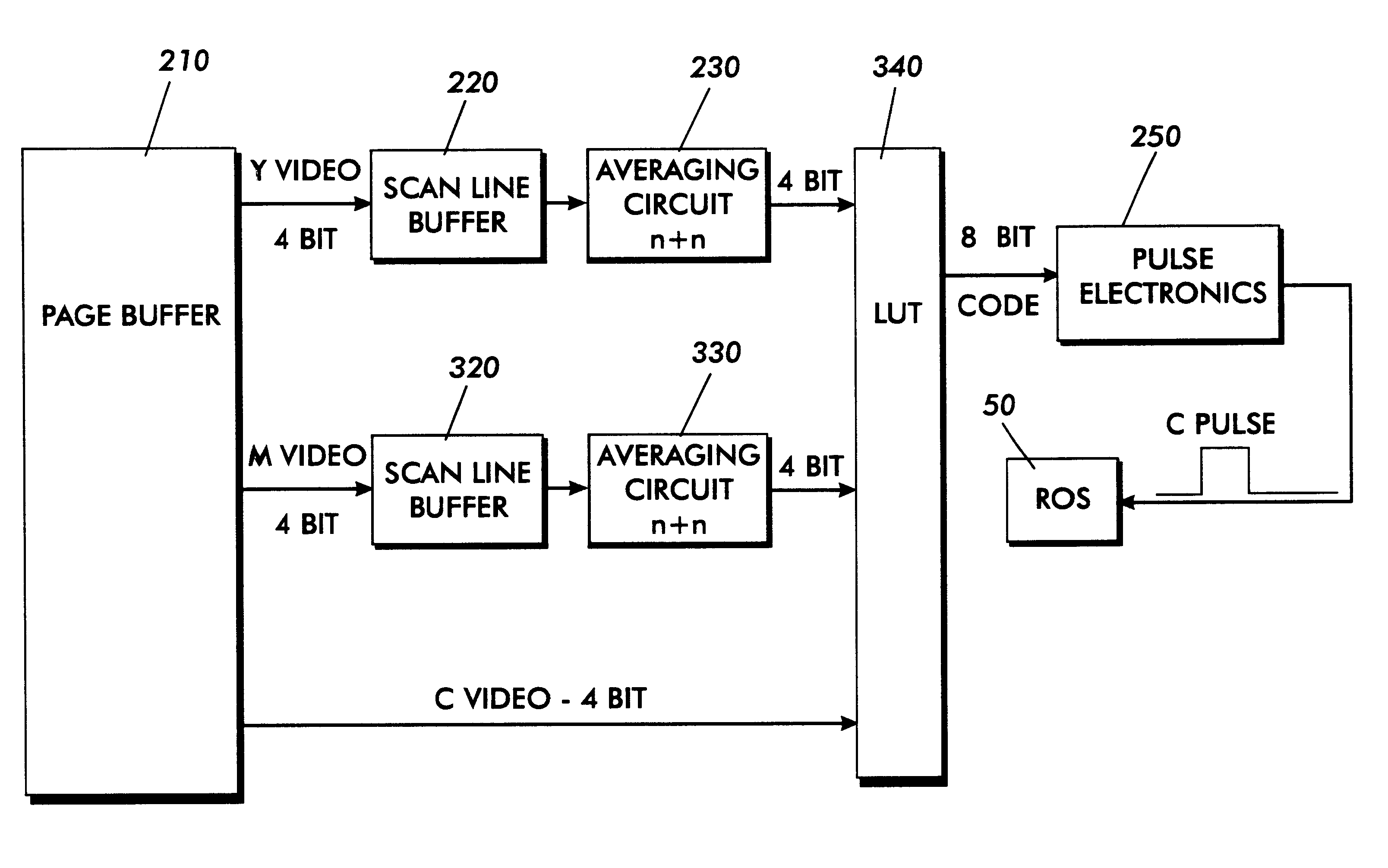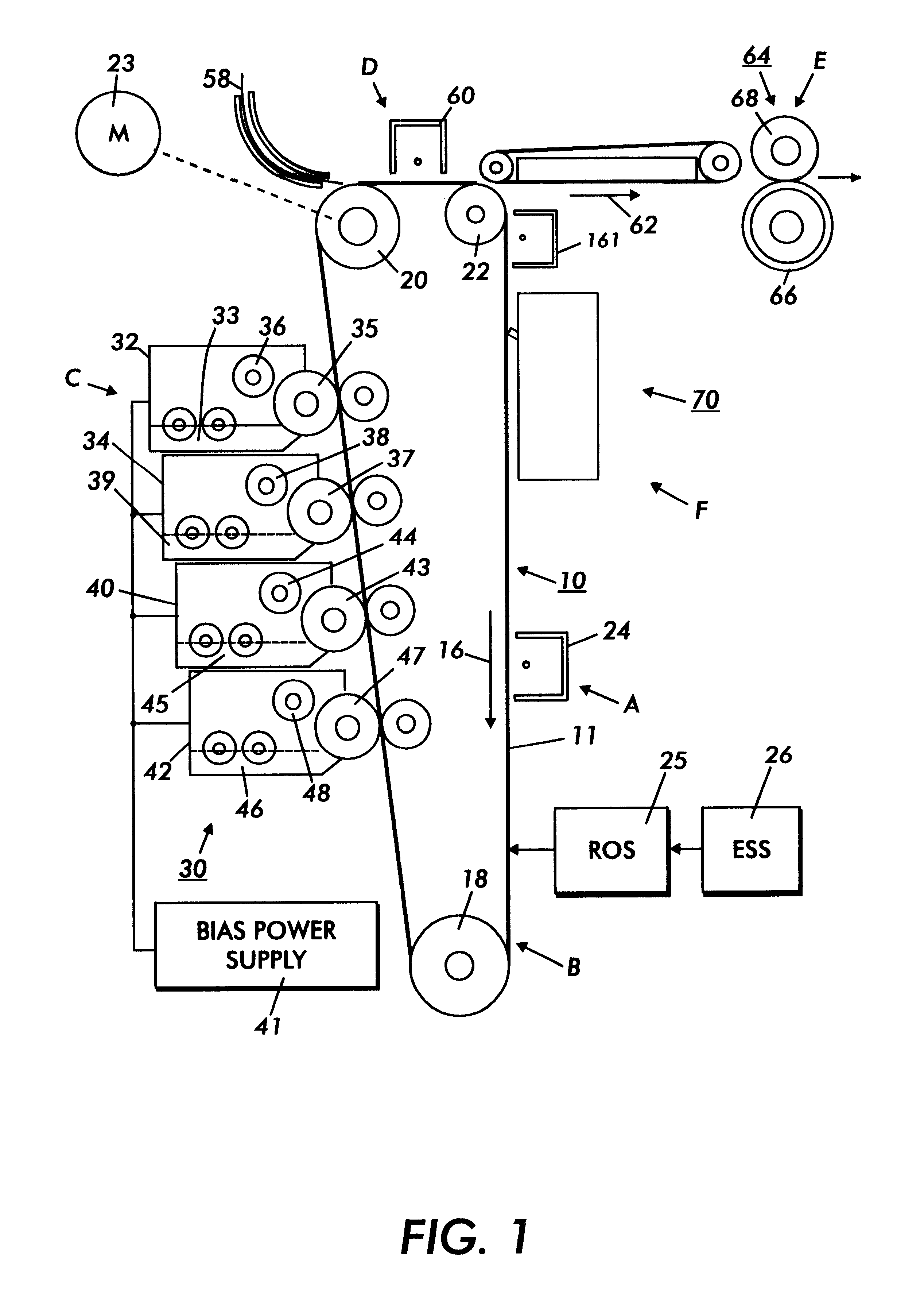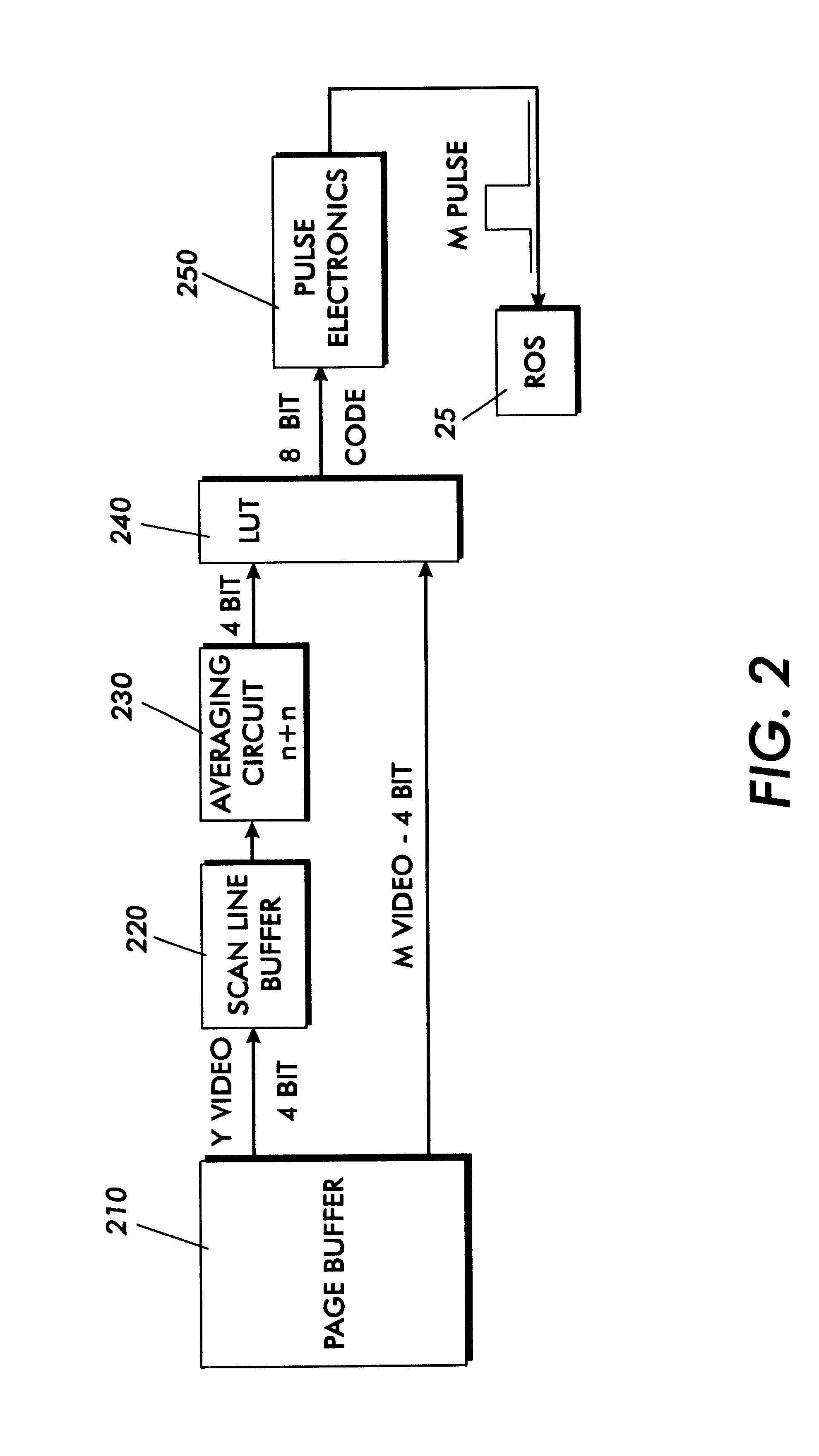The foregoing generally describes a typical black and white electrostatographic printing
machine. With the advent of multicolor electrophotography, it is desirable to use an architecture which comprises a plurality of image forming stations. One example of the plural image forming
station architecture utilizes an image-on-image (IOI)
system in which the photoreceptive member is recharged, reimaged and developed for each color separation, followed by a single transfer of all colors to paper. This greatly simplifies the
transfer system, hence the system architecture, in comparison with a traditional system where each color is transferred to paper separately. As such, IOI machines can be
single pass or multipass. In
single pass IOI machines the charging, imaging, developing and recharging, reimaging and developing, etc followed by transfer to paper, are done in a single revolution of the photoreceptor. This requires multiple charging and imaging stations. In multipass IOI architectures, each color separation is formed with a single charging and imaging
station but with different development stations, though still with a single
transfer operation of all the colors. The
single pass architecture offers a potential for much higher
throughput.
Another approach to blooming problems is found in U.S. Pat. No. 5,519,815 relating an
image processing method for reducing the amount of marking material required to print a
colored image, and avoid problems common to the use of excessive amounts of ink. In a device for
processing color images preparatory to printing, it provides a method of reducing marking material coverage in text and line art areas of secondary colors including the steps of: a) determining the locations of text and line art color pixels having excessive marking material coverage; b) upon determining the locations of color pixels having excessive marking material coverage,
processing separation pixels to turn OFF a predetermined portion of the separation pixels corresponding to color pixels having excessive marking material coverage; and c) to prevent artifacts from occurring in the pixel reduction step,
processing a given area of separation pixels in an order which tends to randomize the turn OFF effect.
U.S. Pat. No. 5,296,877 describes a multicolor printing process in which the shape and intensity of an imaging beam are changed when imaging a portion of a photoconductive element upon which toner has been deposited. Disclosed is a method of forming a multicolor image and apparatus capable of reducing the deviation between successive toner images of different colors and enhancing dot reproducibility. In the event of the second and successive sequences of steps included in a single multicolor image forming process, the intensity of a
laser beam is controlled together with a
beam diameter or an emission pulse width. This control is such that, when the
laser beam scans part of the photoconductive element where a toner image was formed by the preceding sequence of steps, the
laser beam forms a dot of substantially the same size in both the part where a toner image is present and part where a toner image is absent. This is performed in matching relation to the interception and scattering characteristics of the laser beam due to the toner image.
U.S. Pat. No. 5,252,995 describes a system in which the boundaries are enhanced between different color areas by varying the laser power. A multi-color, electrostatic,
laser printing system employs a method for enhancing color representations at boundaries of pixels with different colors. The system employs a charged electrostatic surface that is selectively discharged by application of a modulated laser beam. The system performs the steps of: identifying a pixel of a first color that bounds a pixel of a second color, the first color being a
secondary color; decreasing applied laser power to the electrostatic surface at the
secondary color pixel site in the process of applying underprint and overprint toners to produce the
secondary color; and inhibiting the decrease of applied laser power when applying the overprint toner if the second color pixel is a
primary color that is the same as the color of the overprint toner of the secondary color pixel. A similar inhibition action occurs when an isolated
primary color pixel or a thin pixel line is found so as to assure proper development.
U.S. Pat. No. 5,023,632 describes a method to vary the exposure between black and color toners by examining neighboring pixels around a target pixel. The logic applied here is to increase the exposure amount when all eight reference spots are in a non-exposure state, but use a reference exposure amount in any other situation. Disclosed is an electrophotographic
color image forming method whereby black, yellow,
magenta and cyan toner images are superimposed on a photoconductor to transfer to paper, exposure being changed between black and color in a method in which development of black is performed by a contact developing method, and development of color by a
direct current electric field projection developing method. Also, in exposure for color, the exposure amount is adjusted between highlight and shadow areas. A
full color image of high saturation with good balance between black and color components is reproduced by changing the exposure amount between black and color. It is also possible to obtain a
color image with good reproducibility of highlight areas as well as shadow areas.
The present invention is directed to an apparatus and method for enabling
full color saturation while avoiding undesirable image blooming in color systems.
 Login to View More
Login to View More  Login to View More
Login to View More 


